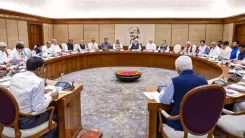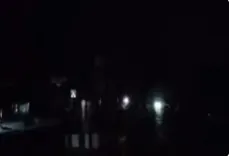Did the Indian Army Really Raze Terror Camps in PoK?

Synopsis
Witness the Indian Army's decisive action in the latest operation against terrorism, as they release compelling video evidence of their strikes on terror camps in Pakistan-occupied Kashmir. This operation, known as **'Operation Sindoor'**, showcases the precision and determination of the Indian forces in combating terrorism.
Key Takeaways
- Operation Sindoor targeted nine terror camps effectively.
- The operation lasted for 25 minutes with precision strikes.
- Video evidence was provided to support the claims of successful strikes.
- Primary targets included Lashkar-e-Taiba and Jaish-e-Mohammed.
- This operation signifies India's strong stance against terrorism.
New Delhi, May 7 (NationPress) The Indian Army, following pre-dawn strikes on nine terror camps across the border, unveiled a collection of videos capturing the exact moments when military strikes targeted the terror installations and structures in Pakistan-occupied Kashmir (PoK) and Pakistan.
The video series provides a glimpse into how the Indian Army and Air Force unleashed bombs for 25 minutes on key terror bases, particularly those of Lashkar-e-Taiba and Jaish-e-Mohammed headquarters located inside Pakistan.
Earlier that day, two female commanders of the Armed Forces informed the public about 'Operation Sindoor', revealing that nine launchpads—five in PoK and four in Pakistan—were struck by 21 precision attacks.
The operation commenced at 1:04 a.m. on Wednesday and concluded around 1:30 a.m.
The Indian Army was the first to announce Operation Sindoor, stating on X, 'Justice is served. Jai Hind.'
The Army also released videos of the precision strikes, showcasing the destruction of the terror hubs.
On X, the Army highlighted the first target – Kotli, stating, 'Target 1 – Abbas Terrorist Camp at Kotli. Distance – 13 Km from the Line of Control (POJK). Nerve Centre for training suicide bombers of Lashkar-e-Taiba (LeT). Key training infrastructure for over 50 terrorists.'
'Target 2 – Gulpur Terrorist Camp at Kotli. Distance – 30 Km from Line of Control (POJK). Control Center and Base of Lashkar-e-Taiba (LeT) used for revival of terrorism in Jammu and Kashmir. Destroyed at 1:08 AM,' was another post shared along with the video.
Earlier in the day, footage of the devastated Subhan Allah terror camp in Pakistan's Bahawalpur emerged on social media. This camp, linked to Jaish-e-Mohammed, has been reduced to rubble, as illustrated in the viral video. Bahawalpur served as both a recruitment and indoctrination center for terror sympathizers.
The video evidence provided by the Army gains significance due to the previous Balakot strikes, which faced skepticism from Pakistan and some political factions in India.
This time, the video evidence aims to address the concerns of naysayers and skeptics.





